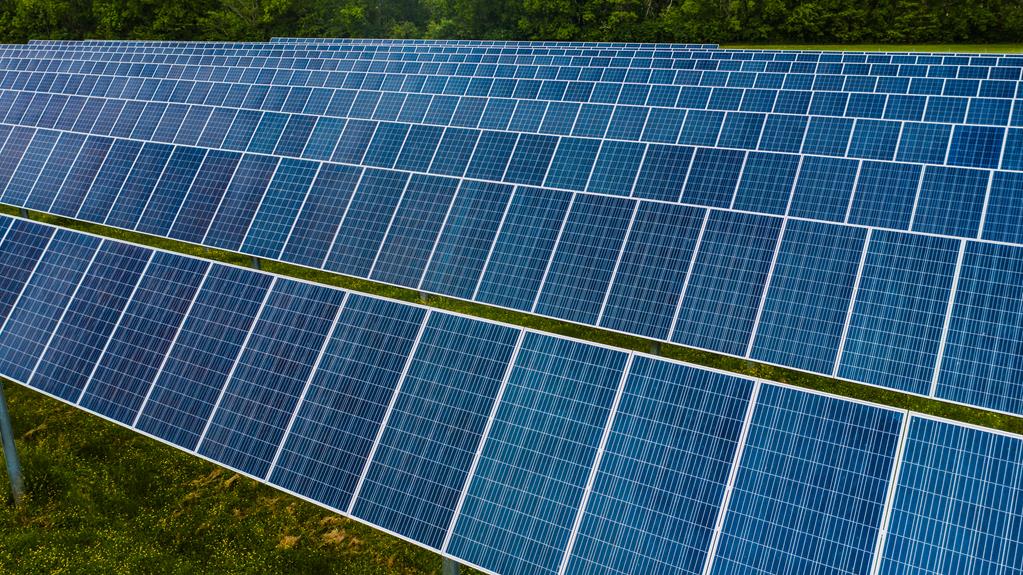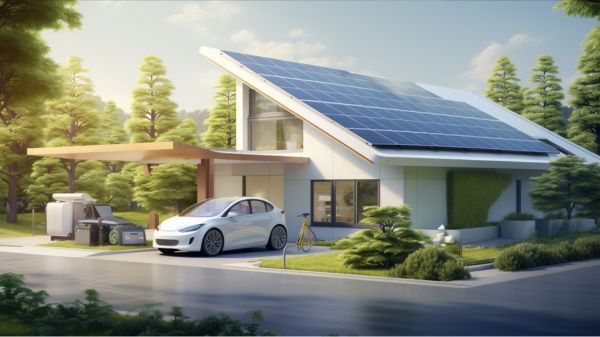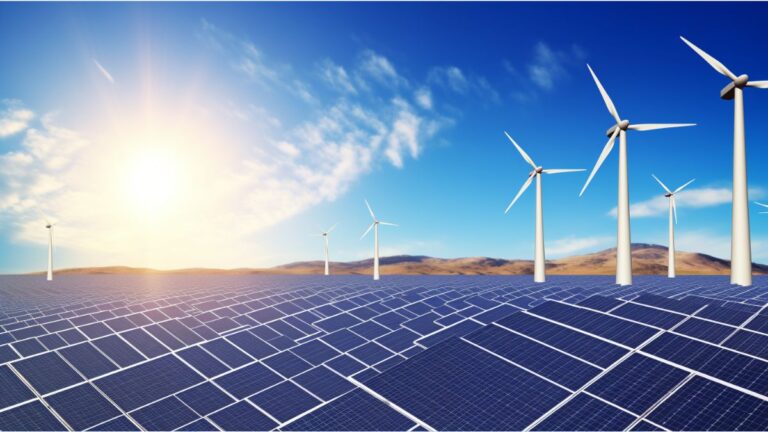7 Breakthrough Innovations Revolutionizing Green Energy
Imagine a world where renewable energy powers our lives in unimaginable ways. Now, witness the breakthrough innovations that are revolutionizing green energy. From solar panel efficiency improvements to advanced wind turbine designs, these game-changing technologies are propelling us towards a sustainable future.
With energy storage breakthroughs, smart grid technologies, and biofuel innovations, we are harnessing the power of nature to meet our energy needs. And with ocean energy innovations and energy harvesting from waste, we are unlocking new sources of clean power.
Welcome to the future of green energy.
Solar Panel Efficiency Improvements
You can increase solar panel efficiency with the use of advanced materials.
Innovations in solar panel manufacturing techniques and solar cell materials have led to significant improvements in the conversion of sunlight into electricity.
By incorporating cutting-edge materials such as perovskites and multi-junction cells, solar panels can now achieve higher conversion efficiencies, allowing for greater energy generation.
These advanced materials have unique properties that enhance light absorption and minimize energy loss, resulting in higher overall efficiency.
Additionally, advancements in manufacturing techniques, such as thin-film deposition and nanostructured surfaces, have further optimized the performance of solar panels.
Advanced Wind Turbine Designs
Revolutionizing green energy, explore the advancements in wind turbine designs that are transforming the renewable energy landscape.
The development of vertical axis wind turbines (VAWTs) has gained attention due to their ability to harness wind energy from any direction, making them suitable for urban environments.
Offshore wind turbines are another breakthrough in wind energy, as they can capture stronger and more consistent winds compared to onshore turbines.
Wind farm optimization techniques, such as advanced control systems and machine learning algorithms, are being implemented to maximize energy production and minimize downtime.
Additionally, bladeless wind turbines are being explored as an alternative design that reduces noise and bird collisions.
Floating wind turbines are also a promising innovation, as they can be deployed in deeper waters where traditional fixed-bottom turbines aren’t feasible.
These advanced wind turbine designs are propelling the renewable energy industry forward, making wind power more efficient and accessible.
Energy Storage Breakthroughs
With the advancement of green energy, it’s essential to discuss the recent breakthroughs in energy storage. Here are four battery advancements that are revolutionizing renewable energy storage:
- Lithium-Ion Batteries: These batteries have become the industry standard due to their high energy density, long lifespan, and fast charging capabilities. They’re widely used in electric vehicles and grid-scale energy storage systems.
- Solid-State Batteries: This emerging technology replaces the liquid electrolyte in traditional batteries with a solid-state electrolyte. Solid-state batteries offer higher energy density, improved safety, and longer cycle life, making them ideal for renewable energy storage applications.
- Flow Batteries: Flow batteries store energy in liquid electrolytes, which can be easily replaced to extend their lifespan. They’re scalable, allowing for larger capacity storage, and offer longer discharge times compared to other battery technologies.
- Sodium-Ion Batteries: Sodium-ion batteries are a promising alternative to lithium-ion batteries. They’re less expensive and use abundant sodium resources. Although still in the early stages of development, sodium-ion batteries show great potential for affordable and sustainable renewable energy storage.
These battery advancements are propelling the green energy revolution, enabling efficient and reliable storage of renewable energy sources. As technology continues to evolve, we can expect even more breakthroughs in energy storage, driving us closer to a sustainable future.
Smart Grid Technologies
You are about to explore the exciting world of smart grid technologies. These advancements are set to revolutionize the way we monitor and optimize energy usage. With real-time energy monitoring, you’ll have access to accurate and up-to-date information on your energy consumption, allowing you to make informed decisions.
Grid optimization techniques will help utility companies improve the efficiency and reliability of their infrastructure, resulting in a more sustainable and resilient power grid.
Additionally, demand response solutions will empower consumers to actively manage and adjust their energy usage, contributing to a greener and more sustainable future.
Get ready to discover the cutting-edge innovations that are transforming the energy landscape.
Real-Time Energy Monitoring
Stay ahead of the game with real-time energy monitoring through smart grid technologies. By integrating smart home devices with the power grid, you can optimize your energy usage, reduce costs, and contribute to a more sustainable future. Take advantage of real-time data analysis to make informed decisions about your energy consumption and identify areas for improvement.
Here’s how real-time energy monitoring can benefit you:
- Cost savings: Monitor your energy usage in real-time and identify opportunities to reduce waste and lower your electricity bills.
- Sustainability: By understanding your energy consumption patterns, you can make adjustments to minimize your carbon footprint and contribute to a greener planet.
- Efficiency: Real-time monitoring allows you to identify energy-hungry appliances and optimize their usage, saving both energy and money.
- Grid stability: By participating in demand response programs, you can help balance the power grid and ensure a stable energy supply for everyone.
With real-time energy monitoring, you can take control of your energy usage, save money, and make a positive impact on the environment.
Grid Optimization Techniques
By integrating smart home devices with the power grid, you can further enhance grid optimization techniques and maximize the efficiency of smart grid technologies.
Grid optimization techniques play a crucial role in managing the increasing complexity of the power grid and ensuring its stability and reliability. These techniques involve the use of advanced algorithms and data analytics to optimize the distribution of electricity, manage demand response, and enable real-time monitoring and control of the grid.
With the integration of smart home devices, such as smart thermostats, energy management techniques can be implemented more effectively, allowing for better control and optimization of energy consumption.
This integration also facilitates the seamless integration of renewable energy sources into the grid, enabling a more efficient and sustainable energy system.
Together, these advancements in grid optimization techniques pave the way for a greener and smarter energy future.
Demand Response Solutions
Enhancing grid optimization techniques involves implementing demand response solutions to maximize the efficiency of smart grid technologies. These solutions, which leverage advanced energy management systems and demand side management strategies, offer a range of benefits for both consumers and utility providers.
Here are four key advantages of demand response solutions in the context of smart grid technologies:
- Flexibility: Demand response solutions enable consumers to adjust their electricity usage in response to real-time price signals or grid conditions, allowing for greater flexibility and control over energy consumption.
- Efficiency: By optimizing energy usage during peak demand periods, demand response solutions help reduce strain on the grid, improving overall system efficiency and reliability.
- Cost savings: Smart grid technologies, coupled with demand response solutions, can help consumers lower their electricity bills by incentivizing energy conservation and load shifting.
- Environmental sustainability: Demand response solutions promote the integration of renewable energy sources and reduce reliance on fossil fuels, contributing to a greener and more sustainable energy future.
With the implementation of demand response solutions, smart grid technologies are revolutionizing the way energy is managed and consumed, paving the way for a more efficient and sustainable energy system.
Biofuel Innovations
Biofuel innovations are revolutionizing the green energy industry by providing sustainable fuel alternatives that are more environmentally friendly.
These advancements have led to increased efficiency in biofuels, making them a viable option for reducing carbon emissions and combating climate change.
With ongoing research and development, biofuel innovations have the potential to significantly impact the transition to a greener and more sustainable energy future.
Sustainable Fuel Alternatives
You can now explore breakthrough innovations in sustainable fuel alternatives that are revolutionizing green energy. These advancements are driving us towards a future of carbon-neutral transportation and clean energy production. Here are four remarkable developments leading the way:
- Biofuels: Derived from organic matter, biofuels offer a renewable and low-carbon alternative to traditional fossil fuels. They can be used in existing vehicles without significant modifications, reducing greenhouse gas emissions and dependence on fossil fuels.
- Hydrogen Fuel Cells: Green hydrogen production involves using renewable energy sources to extract hydrogen from water. Fuel cells then convert this hydrogen into electricity, emitting only water vapor as a byproduct. This technology holds immense potential for zero-emission vehicles and energy storage solutions.
- Synthetic Fuels: Through carbon capture and utilization, synthetic fuels can be produced from carbon dioxide and renewable energy sources. These fuels have the same properties as conventional ones but significantly reduce carbon emissions.
- Methane Capture: By capturing methane emissions from landfills, livestock, and industrial processes, methane can be converted into biogas or upgraded to renewable natural gas. This not only reduces greenhouse gas emissions but also provides a sustainable energy source.
These breakthroughs in sustainable fuel alternatives are paving the way for a greener, more sustainable future.
Efficiency of Biofuels
Maximizing the potential of biofuels requires optimizing their efficiency through continuous research and development. Biofuel production plays a crucial role in reducing carbon emissions and transitioning to a more sustainable energy future.
Innovations in biofuel technology are focused on improving the efficiency of the production process to minimize the environmental impact. One approach is the development of advanced biofuel feedstocks that can be grown on marginal lands, reducing competition with food crops. Additionally, advancements in biotechnology enable the modification of microorganisms to more efficiently convert biomass into biofuels.
Furthermore, the integration of biofuel production with other industries, such as agriculture and forestry, can create a circular economy that maximizes resource utilization and minimizes waste.
Ocean Energy Innovations
Harnessing the power of the ocean through innovative technologies is changing the game in green energy production. Ocean energy innovations are paving the way for a more sustainable future. Here are four advancements that are revolutionizing the field:
- Wave Power Systems: Wave power is the conversion of ocean waves into electricity. Innovations in wave power systems are making it more efficient and cost-effective to harness this abundant energy source.
- Tidal Energy Advancements: Tidal energy is generated by harnessing the power of ocean tides. Recent advancements in tidal energy technologies have increased the efficiency and reliability of tidal power generation.
- Floating Wind Farms: Floating wind farms utilize wind turbines anchored to the sea floor, allowing for the harnessing of strong offshore winds. This innovative approach opens up new areas for wind energy production.
- Ocean Thermal Energy Conversion (OTEC): OTEC harnesses the temperature difference between warm surface water and cold deep water to generate electricity. Advancements in OTEC technology are making it a viable option for clean energy production.
These ocean energy innovations aren’t only reducing our dependence on fossil fuels but also providing a sustainable and renewable source of power for the future.
Energy Harvesting From Waste
One way to significantly contribute to green energy production is by tapping into the potential of energy harvesting from waste.
Waste to energy solutions have emerged as an innovative approach to address the dual challenge of waste management and energy generation. By converting various forms of waste, such as organic matter, biomass, and landfill gas, into usable energy, these solutions not only reduce the burden on landfills but also provide a sustainable source of power.
This aligns with the principles of a circular economy, where waste is viewed as a valuable resource that can be repurposed and reused. Energy harvesting from waste holds great promise for reducing greenhouse gas emissions and fostering a more sustainable and resilient energy system for the future.
Conclusion
You have just witnessed the future of green energy, where breakthrough innovations are transforming the way we generate and store power. Imagine a world where solar panels have become twice as efficient, allowing households to generate more electricity than ever before.
Picture wind turbines with advanced designs that harness the maximum potential of wind energy, powering entire cities. And consider the possibilities of energy storage breakthroughs, enabling us to store surplus energy and use it during peak demand. This future isn’t far off, and it promises a sustainable and efficient energy landscape.






